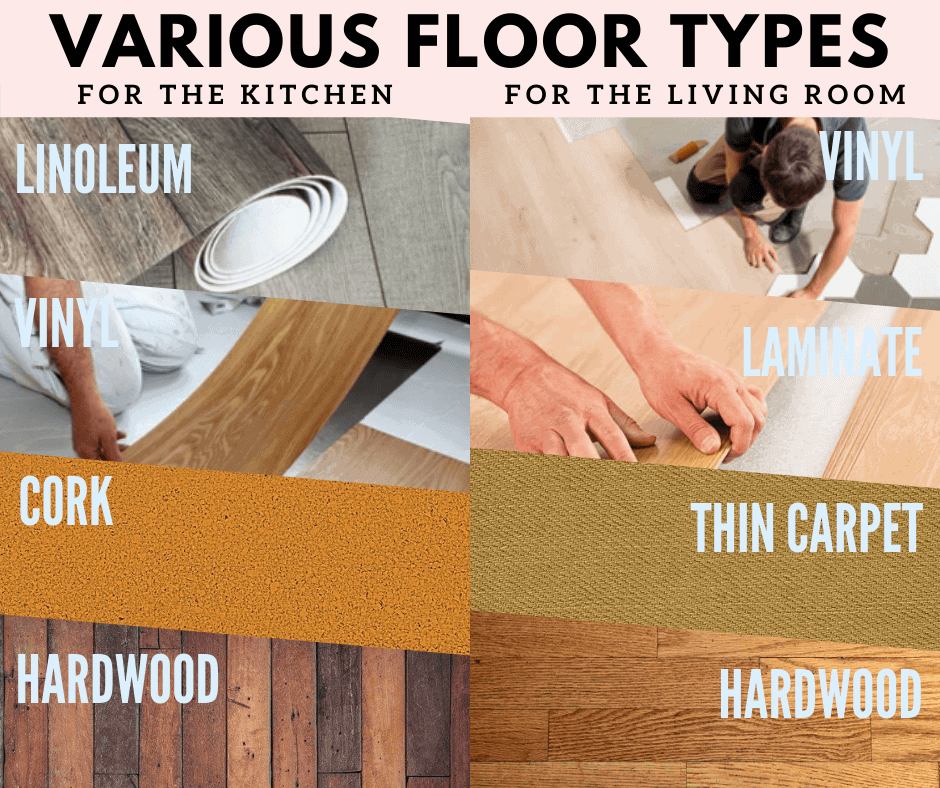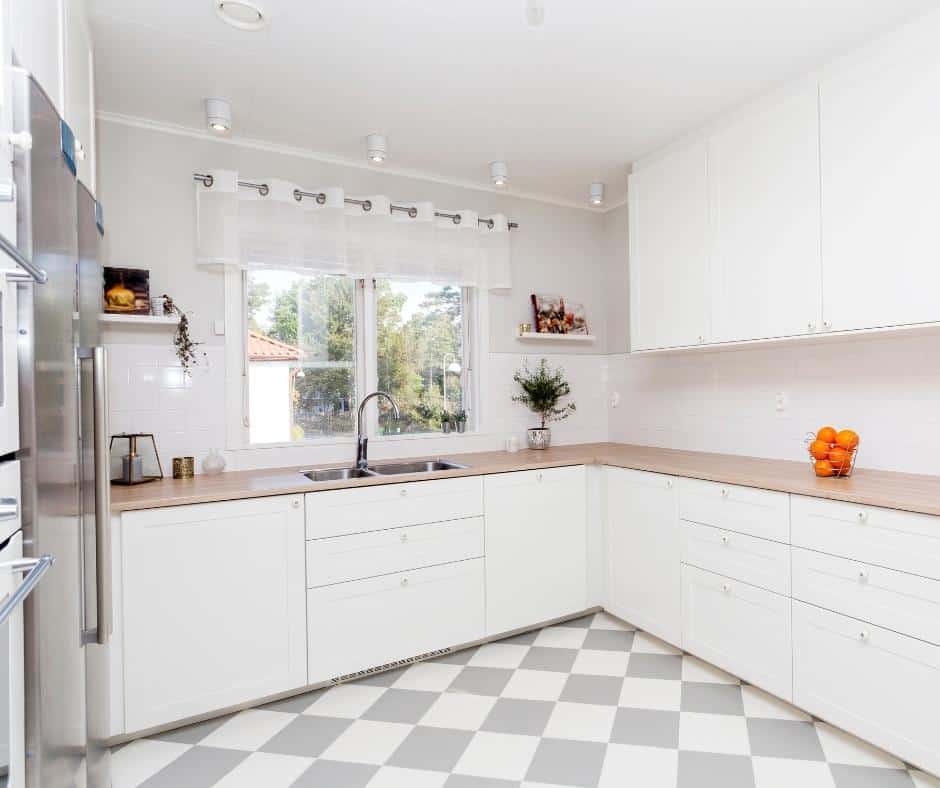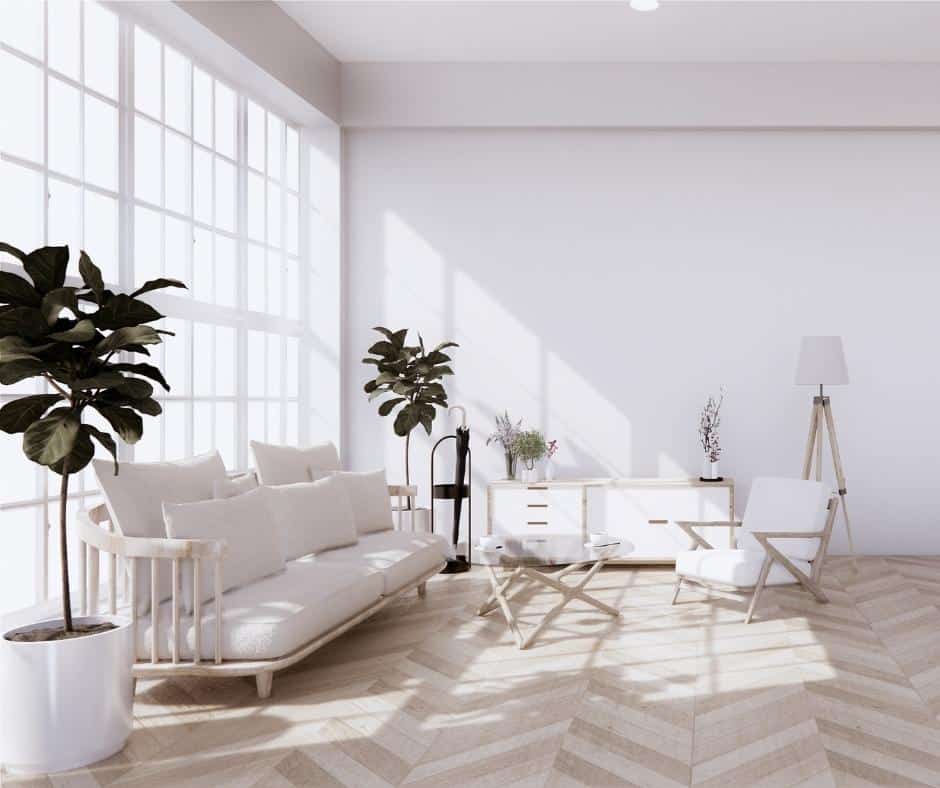Everyone dreams of living in a harmonious place where every item and color blend in and fit nicely. Even if you don’t notice these things, on a subconscious level, the harmony around you will reflect on your mood and inner peace. So, this begs the question: should the kitchen floor match the living room floor?
If you’re looking for consistency, then the kitchen floor should match the living room. But, if you don’t want to go for an exact match, then floor coordination is the right option here. It all comes down to personal preferences.
In This Article We'll Discuss
What Should You Do If Your Kitchen and Living Room Floor Don’t Match?

If you find yourself in the unfortunate situation where the kitchen floor and living room floor don’t match, then you have your work cut out for you. But, before you decide on whether matching or coordinating is the way to go, you need to consider a few factors.
If you have an open concept, you’ll want to find an exact match for the floor in the kitchen and the living room. This is also ideal if you have a hardwood floor because it makes the place appear more spacious. Matching floors will also make a tiny place look much larger. In addition, having matching floors also gives the area rugs in the living room more prominence and appeal.
As for a coordinated floor, it’s usually the ideal option if finding the exact match to the floor is not easy. In some cases, harmony in the space comes from using floors that complement each other, instead of those that match.
We also recommend coordinating the floors if the kitchen and living rooms are far apart from each other.
If you’re new to installing floors, then you should familiarize yourself with the best floor types for these living spaces.
For the kitchen floor:
- Linoleum
- Engineered hardwood
- Cork
- Vinyl
For the living room:
- Vinyl
- Laminate
- Hardwood
- Thin carpeting
What Should You Do If You Have an Uneven Floor Between the Kitchen and Living Room?

As we mentioned, if the two rooms are connected, it’s best to make sure that the floors of the kitchen and living room are an exact match. But, when the floor is uneven between the two spaces, you’ll need to pour a self-level underlayment. It will fix the dips and bumps in the floor and allow you to install your preferred flooring without issues.
However, if the two rooms aren’t connected, you’ll have to be a little creative if you want to achieve some harmony in your place without making drastic changes. In this case, opt for coordination. Why? Because even if you get the exact match of the floors, you won’t get the same dramatic effect since the rooms are separated.
Coordination means finding colors and materials that complement each other rather than those that look exactly like each other. It’s a subtle difference, but it’s noticeable.
How Can You Match Vinyl Flooring in The Kitchen to Existing Hardwood?
This is a problem that you might come across if you tend to move houses frequently. Vinyl was once the go-to flooring for the kitchen.
Hardwood, on the other hand, was and still is the most common flooring type for the living room. So how can you match these two seemingly unmatchable types?
The problem has to do with the different elevations of the two floorings. So, to get over that, apply transition strips. These little home improvement strips allow you to transition from the vinyl to the hardwood almost seamlessly.
Then, you won’t have to worry about bumps or sharp and abrupt contrasts in tone or texture between the two different floors.
Transition strips come in two varieties— either adhesive or screw-in. Depending on your skills and level of comfort with home improvement projects, you can choose the option that suits you. If you don’t like to use tools, then the adhesive strips would get the job done quicker and without much fuss.
Conclusion

When it comes to open-concept homes, it’s important to make the space feel harmonious. One way to do that is to ensure your floors are the same throughout your space. So, if your kitchen and living room floors don’t match, then you’ll have to fix that issue.
Even if you don’t have an open-concept home, and your kitchen and living room are separate from one another, your floors can match or at least complement each other. If the exact match is not possible, then you can look at coordinating the floors and creating harmony using complementing tones and textures.

